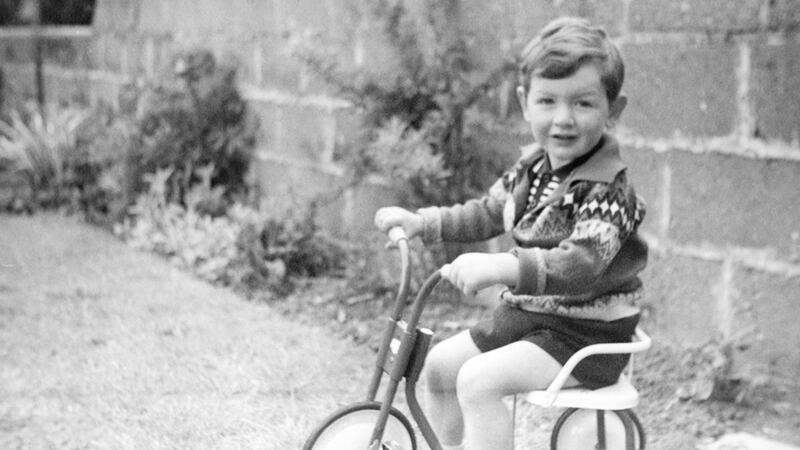SOCIAL HISTORY: ROY FOSTERreviews Privileged Lives: A Social History of Middle-class Ireland1882-1989 By Tony Farmar A&A Farmar, 368pp. £19.95
THE OLD CANARD that the Irish “don’t have a class system”, and indeed have even been spared the indignity of possessing a middle class at all, has been trotted out by all sorts of authorities over the past century or so, often in the most self-congratulatory way. Tony Farmar, rightly, will have none of it. His entertaining book continually sets up such allegations (the most recent from Ulick O’Connor) and then delightedly knocks them down. Along the way he produces a wide range of anecdotal and statistical indications of the existence, economics and self-image of Ireland’s middle class. It is just a pity that he never quite defines it.
As a social historian he knows where to go for consumer-research reports, ESRI analyses and the op-ed journalism of past eras; he also makes good use of diaries and journals, some of them unpublished. Literary evidence is also employed, but rather uncritically: are the cramped lives mercilessly delineated in Maeve Brennan's short stories from the same couche sociale as Alice Taylor's rural Pollyannas? Can we trust "Sissy O'Brien's" memories as mediated by Lady Carbury in The Farm By Lough Gur? And what do the raunchy imaginings of Lee Dunne's Goodbye to the Hillhave to do with the sex lives of the Irish middle classes?

More reliable are Farmar’s useful tables of earnings, housekeeping accounts and records of dietary change; he also has a sharp eye for sartorial fashion. But the idiosyncratic structure of the book makes it difficult to discern actual patterns of change or evolution in the practice of everyday life. The narrative zeroes in on key “years”, separated by a generation: 1882, 1907, 1932, 1963 and 1989. This enforces brave jumps in time across chasms concealing an eventful history, without analysing what happened in between. Thus the differences between 1907 and 1932 are blithely considered without looking at the implications of the Irish revolution for constructing a new middle class, successor to the old Irish Parliamentary Party elite: though Farmar instances evidence from figures such as Richard Mulcahy and WT Cosgrave, the seismic events that settled them comfortably into the Irish haute bourgeoisie go unmentioned. (Nor does he have an opportunity to consider the extent to which that revolution was driven by members of the middle class.) And his concentration on Dublin gives short shrift to the way a rural middle class emerged from the upheavals of Famine and land war.
Farmar makes the suggestive point that, as the 20th century developed, class solidarity among the middle ranks of Irish society (especially in the cities) counted for more than religious difference; this is convincing, though partly because the Protestant middle classes declined so spectacularly in numbers. (Again, skipping over the 1907-32 period allows him to ignore the reasons for this process.) He is nonetheless good on the way that old Protestant areas of influence lingered in banking and commerce, but there is next to nothing about the structures of clubs, social organisations and schools that underpinned the process. Instead, there is too much familiar stuff about the decline of the “ascendancy”, which has nothing to do with his title.
More surprisingly, there is very little about Catholic middle-class education and social mobility (or stasis); the route from, let us say, Gonzaga to the Law Library via the LH is left unprospected, as are the historic differences between the Royal Irish and the Royal St George yacht clubs. Sexual liberation is discussed, but the class aspects of the feminist revolution are left aside. And though the press supplies many of his sources, his discussion of the class affiliations of Irish newspapers is tantalisingly brief. As the book goes on there are vivid disquisitions on all sorts of set pieces that occurred in the selected years (the Playboyriots, the Eucharistic Congress, JF Kennedy's visit, the murder of Hazel Mullen), but what any of this means for the "middle class" goes by the board. By the last, rather perfunctory section we are served up an anecdotal social history of moments of Irish experience, which is not the same thing.
This smorgasbord is accompanied by many tasty and perceptive asides from some suggestive sources: the "moral advice" offered by the professor of moral theology in Maynooth to readers of the Irish Ecclesiastical Recordbetween 1940 and 1955, for instance, effectively advises tax evasion as a matter of course. But the reader who wants either clarification of the minutiae of class differentiation or the larger picture of how an Irish middle class perceives itself and enforces its codes, values and privileges will have to look elsewhere. And the cut-off date of 1989 avoids discussing whether the subsequent destruction of the country's economic reputation by bankers, a supine "regulator" and deluded developers may be laid at the door of a privileged "middle class" protected by a no-blame culture of mutual support. But the answers to that question lie all too obviously elsewhere.
Roy Foster is Carroll professor of Irish history at Oxford University. His most recent book is Luck and the Irish: A Brief History of Change 1970-2000(Penguin)











